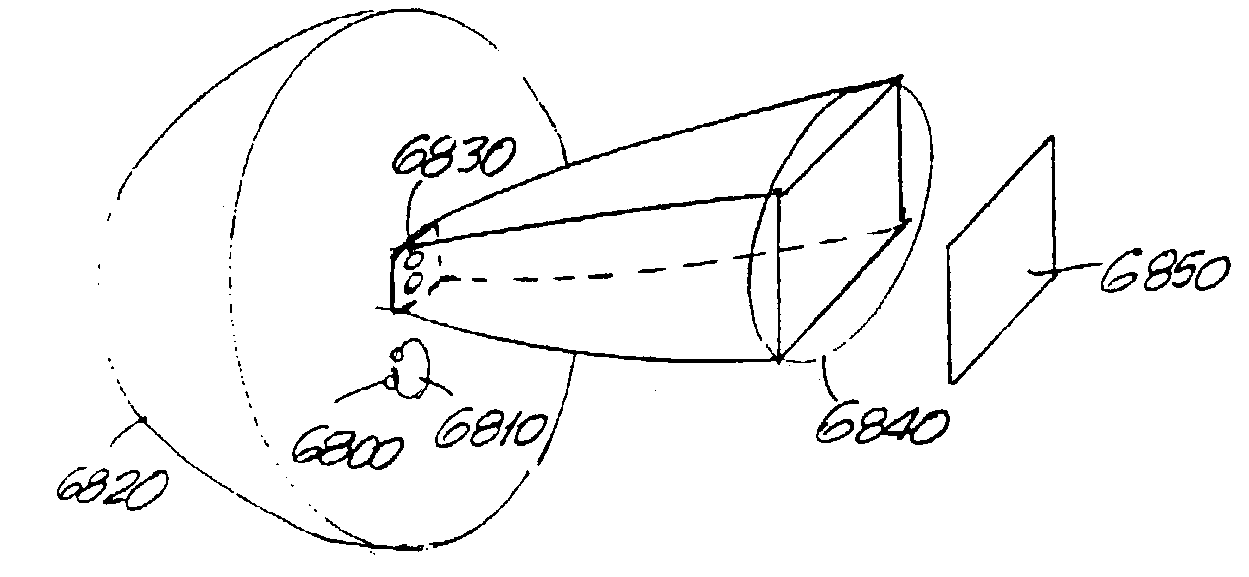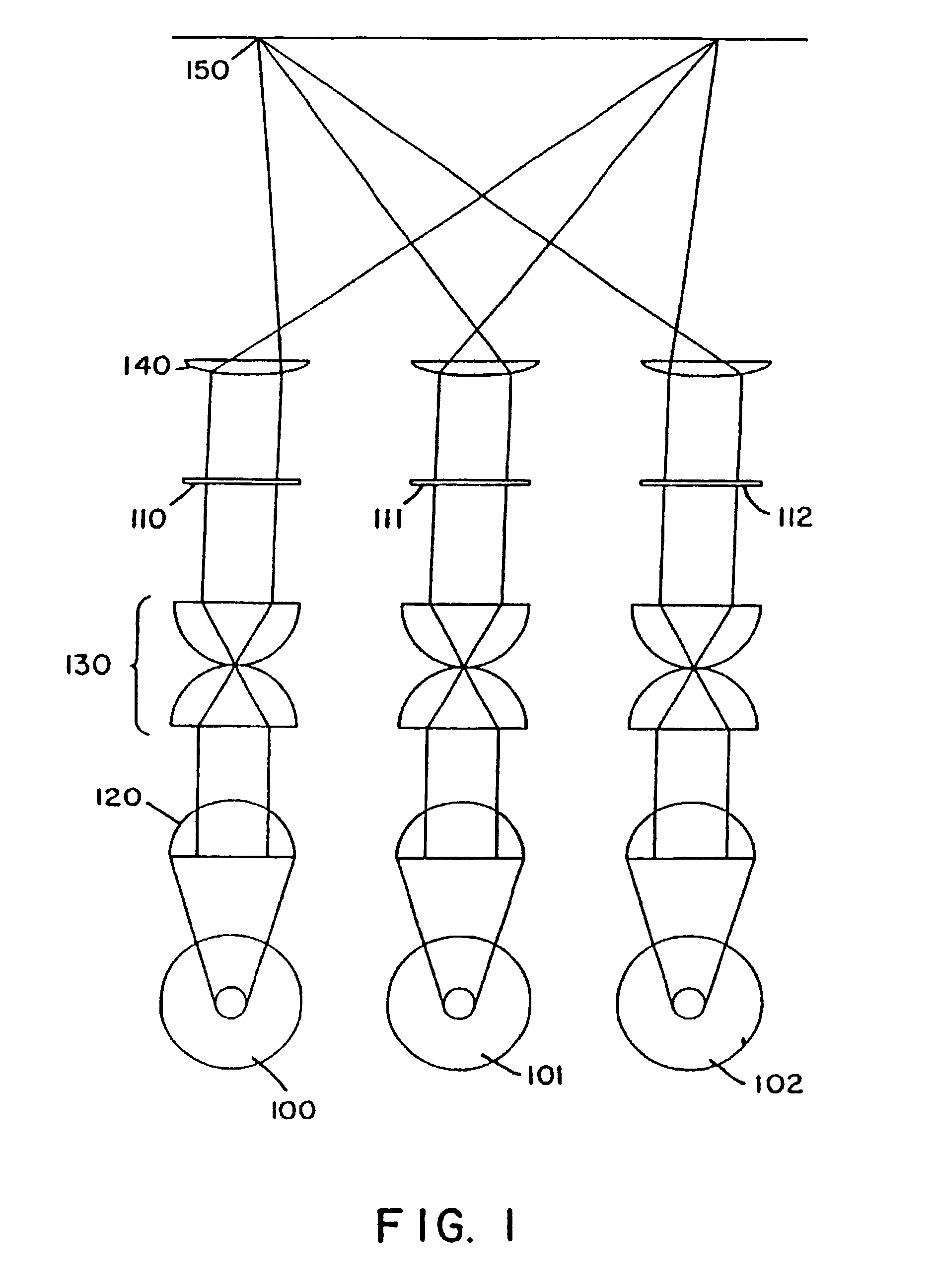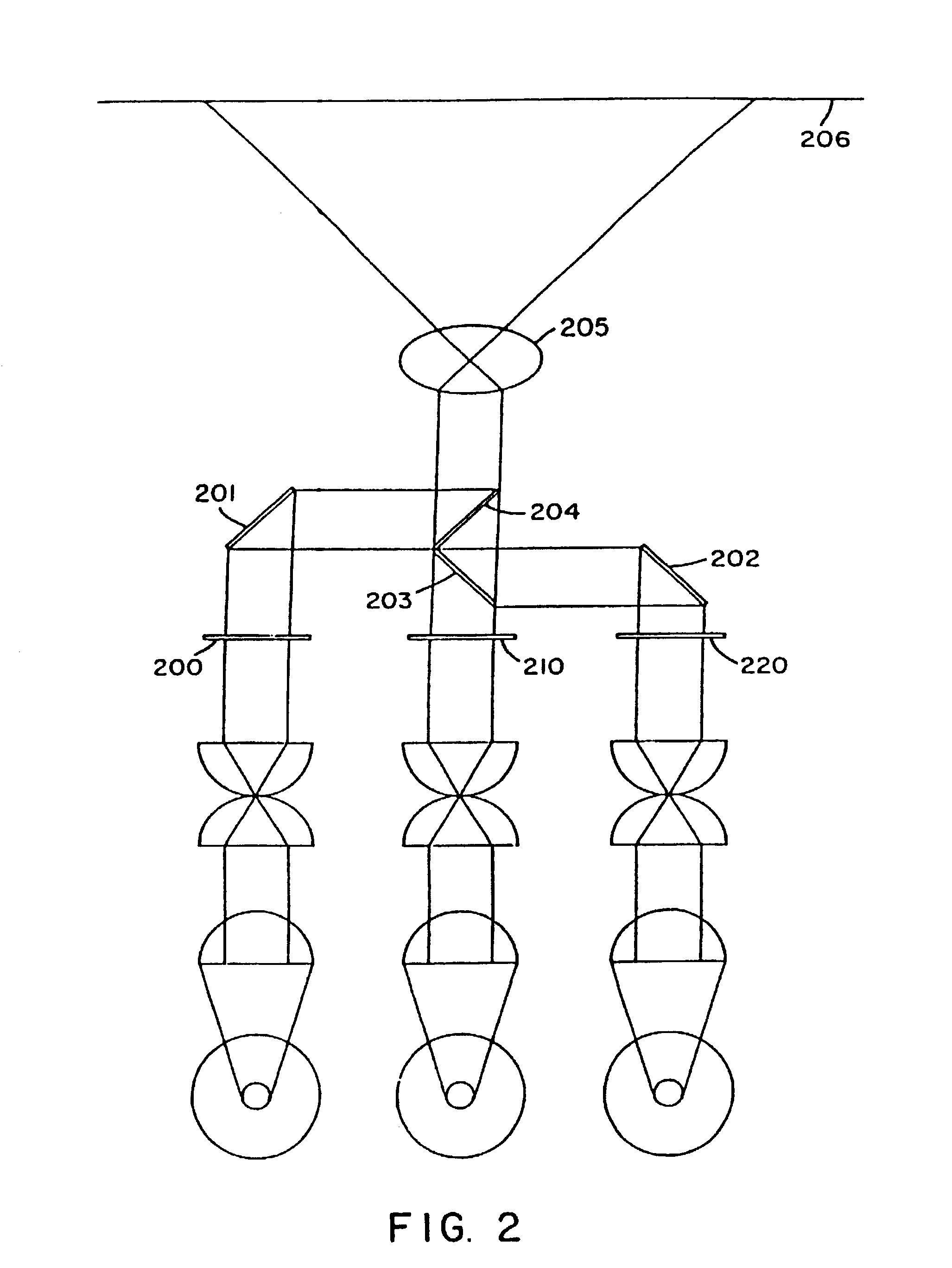Although CRT technology has progressed over the years, several major drawbacks remain.
Picture size is still limited, making group viewing difficult.
CRT picture tubes larger than about 30″ (measured diagonally) become impractical because of size, weight, expense and danger of implosion because of the high vacuum used.
To achieve high brightness they use dangerously high voltages and may produce health hazards from x-rays and electromagnetic fields.
In addition, CRT displays are subject, particularly when viewed at
close range, to visual artifacts such as scanning lines and discrete
phosphor dots or stripes, which are inherent in such TV displays.
These visual artifacts provide a poorer
image quality than images in movie theaters.
Plasma, electroluminescent (EL) and
cold cathode phosphor displays are among the most promising candidates, although they have not proved themselves to be practical.
Furthermore, it is highly questionable whether these other emissive displays, if and when successful, would provide any advances over current CRT brightness or size in practical applications.
Creating a large picture for direct viewing however poses many problems which have heretofore not been overcome.
Simple
multiplexing cannot produce a satisfactory image because of cross-talk.
An
active matrix relieves the cross-talk problems, but has so many more production steps and so many switching and storage elements that must be deposited over a large surface area that production of large, defect-free
active matrix displays for direct viewing has not been possible and may never be economically feasible for very large displays.
Unfortunately, such
projection display devices have exacerbated many of the problems associated with earlier video display systems and have created new problems.
Projection televisions are more expensive than standard direct-view televisions and are more cumbersome, heavier, and larger so that portability is impractical.
The CRT-based
projection system remains relatively dim, requiring a dimly-lit viewing environment and a costly special screen which provides a very limited viewing angle.
The three tubes also increase the danger of tube implosion.
Proper convergence is not easily achieved and often requires up to a half hour of additional set-up time because of the curvature of the lenses and variations in the performance of the circuits in either
system.
The
laser systems developed thus far are much too large to be portable, very complex to use and maintain, extremely expensive, potentially dangerous and have proven too dim for large images.
The electrical matrix
system has proved difficult to engineer, requiring deposition with extremely high precision of a transparent material having good
conductivity characteristics.
Further, such matrices must be driven by extremely
fast switching circuits, which are impractical at the high voltages required to activate a given area of most materials.
A major drawback to such
multiplexing is cross-talk, where surrounding areas are affected by the
electric field, causing false data to influence surrounding pixels, reducing contrast and resolution, as well as
color saturation and accuracy.
The cross-talk problem increases when resolution increases because
liquid crystal materials respond fairly linearly to applied
voltage.
Non-linear materials can be added to the
liquid crystal mix, but this still doesn't allow for more than about 160 lines of resolution before cross-talk significantly degrades the image.
This characteristic wastes light, produces a
dimmer image with poorer contrast and generates more heat because of the brighter source necessary to compensate for the dim image.
High refresh rates are impractical because they would require faster switching times and faster responding material.
If high-wattage light sources are used in order to achieve very bright displays,
heat sensitivity can cause a decrease in contrast and color fidelity.
Absorption of
high intensity light by color filters and polarizers (if used), even if little or no
infrared light is present, results in heating of these elements which can also degrade
image quality and may even damage the
light valve.
Use of fan cooling causes objectionable
noise, especially in quiet environments when source volume is kept low.
Another inherent problem of
light valve projection systems relates to the fact that each pixel of the frame is surrounded by an opaque border that contains addressing circuitry or
physical structure.
This results in visibly discrete pixels and contributes an objectionable “graininess” to the image that become progressively more annoying when viewed at close distance or on large screens.
The problem is amplified if a single full-color light valve is used in which the individual red, green, and blue color elements of each pixel are not converged or blended and are visible to the viewer.
Unfortunately, such light valve projectors have, up to the present, exhibited several shortcomings which fall generally into at least four broad categories, namely:1) light valve restrictions;2)
light source limitations;3) optical system inefficiencies; and4) screen performance weaknesses.
 Login to View More
Login to View More  Login to View More
Login to View More 


